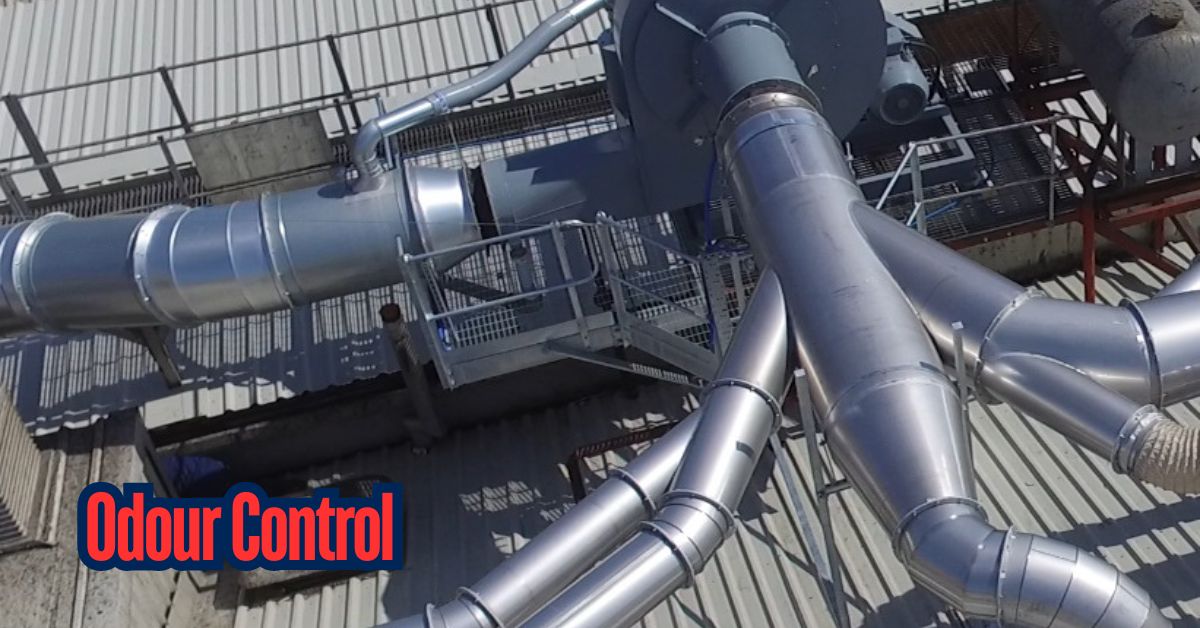TECHNOLOGY
The Development of Video Editing: How Artificial Intelligence is Changing the World

The art of editing has long been an invisible yet essential force in crafting the stories we see on screen. It weaves disparate scenes into cohesive narratives, breathes pacing into storylines, and evokes audience emotions. Yet, as technology evolves, so too does this craft. The emergence of artificial intelligence has heralded a new era in video editing—an era where intelligent algorithms increasingly complement the once-manual and meticulous tasks of cutting and splicing. By incorporating tools like the AI video editor, the industry is witnessing a seismic shift in how video content is produced, where manual repetition gives way to AI’s promise of streamlined efficiency and creative enhancement.
The Rise of AI in Video Editing
Artificial intelligence is not new, yet its integration into video editing software is relatively recent. By harnessing AI’s power, editors can automate various aspects of the editing process, such as sorting clips and refining color grades, allowing them to dedicate more time to the creative aspects of their work. This widespread adoption transforms the traditional editing suite into a laboratory of innovation, where humans and machines collaborate to push the boundaries of storytelling.
AI and Creativity: Companions or Competitors?
In creative work, there’s often concern that machines might one day replace human imagination. In video editing, however, AI has proven to be more of an assistant than a rival. It takes on tedious tasks so editors can focus on story construction and emotional impact. Nevertheless, AI’s growing capability to make creative contributions, such as suggesting edits or generating content, has raised discussions on where to draw the line between human artistry and algorithmic suggestions. In this light, AI is seen not as a replacement but as a powerful tool to aid the creative process.
Breaking Down the Technicalities: How AI Video Editing Works
The workings of an AI video editor are as fascinating as they are complex. At its core, AI operates on algorithms designed to learn and adapt from data input. Regarding video editing, these AI systems analyze vast footage, identify patterns and context, and make editing decisions based on pre-programmed parameters. Over time, with more data and feedback, these algorithms become more adept, providing editors with intelligent tools that can expedite mundane editing chores and even predict future editing decisions.
The Role of AI in Post-Production Workflows
With AI, the scope of video editing expands well beyond traditional boundaries. It introduces novel capabilities such as automated transcription, intelligent object recognition, and predictive editing, reshaping post-production workflows. This automation streamlines processes and enhances the artistic palette available to editors, enabling them to experiment with new styles and techniques. By managing routine tasks, AI allows editors to invest more energy in the creative aspects of video production, like storytelling, pacing, and aesthetics.
Balancing the Scale: Benefits and Ethical Considerations of AI in Video Editing
While the surge in AI’s capabilities brings significant benefits, it also introduces serious ethical considerations. Deepfake technology, an offshoot of video editing AI, has become a hot-button issue, necessitating discussions around authenticity and the intention behind content creation. The industry needs to develop ethical standards and practices to safeguard against the misuse of AI. By establishing transparent and responsible AI use, video editing can continue to benefit from AI’s advantages without compromising trustworthiness.
Future Projections: AI Video Editing in the Next Decade
The future of video editing with AI is rife with potential for transformative changes. As AI technology matures, we can anticipate editing software that automates routine tasks, comprehends narrative structures, suggests creative tweaks, and interacts with users more intuitively. These advancements could eventually shift the role of video editors from operators to directors of AI-powered editing systems, overseeing the creative process at higher levels.
AI Video Editing Tools: A Comparative Review
When selecting an AI video editing tool, it is crucial to consider individual needs and project requirements. Each software brings distinctive features, some boasting cutting-edge AI functionalities while others highlight user-friendly interfaces. A comprehensive review and comparison of these tools suggest the best suited for a given editing style or production scale. Ultimately, the decision hinges on finding the perfect synergy between the editor’s expertise and the software’s capabilities.
Embracing AI for the Art of Video Editing
To conclude, the nexus of AI and video editing heralds a promising future. The dynamic interplay between evolving AI technology and human creativity suggests an industry on the cusp of a renaissance, as evidenced by insights from IBM’s exploration of artificial intelligence. Professionals who successfully incorporate AI into their workflow stand to gain from this technological revolution as they traverse this terrain, elevating the age-old craft of storytelling to new heights of creativity.
TECHNOLOGY
Comprehensive Guide to Odour Control

Introduction
Odours can be as unwelcome as an uninvited guest. They linger in the air, invade our senses, and disrupt our peace. Whether it’s a musty smell from the basement or lingering food scents after dinner, tackling odours is essential for a fresh environment.
But where do these smells come from? And how can we effectively banish them for good? This guide dives deep into the world of odour control, offering insight into prevention techniques and elimination strategies that work wonders. From natural remedies to commercial products, you’ll find everything you need to combat unwanted scents right here.
Get ready to transform your space into a breath of fresh air! Let’s explore together how to understand, prevent, and eliminate those pesky odours once and for all.
Understanding Odours
Odours are more than just scents; they tell a story about our environment. Every smell we encounter has its own origin and significance. Some aromas evoke memories, while others can signal danger.
Our sense of smell is intricately linked to our emotions and experiences. This connection explains why certain fragrances can uplift our mood or trigger nostalgia.
The science behind odours involves tiny molecules that travel through the air, reaching our noses and activating receptors in the olfactory system. Different compounds create distinctive smells, from sweet floral notes to pungent sulphur.
Interestingly, not all odours are unpleasant. The world is full of delightful fragrances waiting to be discovered—think fresh-baked bread or blooming jasmine flowers.
Understanding how these scents work helps us appreciate their role in daily life while navigating the challenges of unwanted odors effectively.
Prevention and Elimination Techniques
Preventing odours is often easier than eliminating them. Start by identifying the sources of unpleasant smells in your environment. Regular cleaning can significantly reduce odour-causing agents.
Ventilation plays a crucial role in keeping spaces fresh. Open windows and use exhaust fans to promote air circulation, allowing stale air to escape and fresh air to enter.
When dealing with specific areas like kitchens or bathrooms, focus on moisture control. Wipe down surfaces after use, fix leaks promptly, and ensure proper drainage.
For fabrics and upholstery, consider using protective sprays that repel spills before they become a problem. Regularly washing linens also helps keep them smelling great.
If an odour does arise, act quickly! Use absorbent materials like baking soda or activated charcoal to neutralize the smell at its source. Prompt action makes all the difference in maintaining a pleasant atmosphere.
General Odour Control
General odour control involves a few key strategies to keep your environment smelling fresh. The first step is identifying the source of the smell. This could range from spoiled food in the kitchen to damp clothes in the laundry.
Once identified, thorough cleaning is essential. Regularly vacuuming and mopping can help eliminate lingering scents trapped in carpets or hard surfaces. Don’t forget to wash textiles like curtains and cushions; fabric absorbs odours easily.
Ventilation plays a critical role too. Open windows whenever possible to let fresh air circulate throughout your space. Use exhaust fans where available, especially in high-moisture areas like bathrooms and kitchens.
Consider incorporating natural elements such as plants that improve indoor air quality while adding fragrance. Essential oils can also provide pleasant aromas without harsh chemicals, creating a more inviting atmosphere for you and your guests.
Specific Odour Control
Specific odour control targets unique sources of unpleasant smells. Different environments and materials require tailored solutions.
For example, kitchen odours often stem from cooking. Regularly cleaning appliances can help eliminate lingering scents. Vinegar or baking soda works wonders here as natural deodorisers.
In bathrooms, moisture leads to musty smells. Ensure proper ventilation to combat this issue. Using essential oils like lavender can also refresh the space while masking unwanted aromas.
Pet-related odours present another challenge. Washing pet bedding frequently helps reduce smell retention. Enzymatic cleaners break down organic waste effectively, neutralising the source instead of just covering it up.
For outdoor spaces such as gardens or patios, consider planting aromatic herbs or flowers that naturally repel bad smells while adding beauty to your surroundings. Each area has its own needs; understanding these nuances makes all the difference in effective odour management.
Natural and DIY Odour Eliminators
Natural and DIY odour eliminators are simple yet effective solutions for tackling unwanted smells. Many household items can be transformed into powerful deodorisers.
Baking soda is a classic choice. It absorbs moisture and neutralises acidic odours, making it perfect for fridges or carpets. Just sprinkle some on the affected area, let it sit, and vacuum up the remnants.
Vinegar also works wonders due to its acetic acid content. Mix equal parts water and vinegar in a spray bottle for an all-purpose cleaner that fights stubborn scents without harsh chemicals.
Essential oils such as tea tree or lavender provide fragrant alternatives too. A few drops added to baking soda creates a delightful deodoriser that not only masks but eliminates odours over time.
Activated charcoal is another natural option with its porous structure effectively trapping unpleasant smells from various surfaces. These DIY methods are eco-friendly choices everyone can embrace at home.
Commercial Odour Control Products
Commercial odour control products are designed to tackle tough smells in various environments. These solutions range from air fresheners to specialized deodorisers that target specific odours like smoke or pet urine.
Many of these products contain powerful ingredients that neutralize odours rather than just masking them. This makes them effective for use in offices, schools, and healthcare facilities where maintaining a pleasant atmosphere is essential.
When selecting a product, consider the source of the odour and its intensity. Some formulations work best on organic matter, while others excel at eliminating chemical scents.
For larger spaces or persistent issues, fogging systems may be necessary. They disperse deodorising agents throughout the area quickly and efficiently.
Always check for safety data sheets before using commercial products to ensure they’re suitable for your environment and safe around people and pets.
Odour Control in Specific Environments
Different environments call for tailored odour control strategies. In kitchens, regular cleaning and good ventilation are essential. Grease and food residues can create lingering smells that attract pests.
Bathrooms often face moisture-related odours. Using desiccants or dehumidifiers can help manage humidity levels, reducing musty scents effectively. Routine scrubbing of tiles and grout will also prevent mildew build-up.
For pet owners, managing animal scents requires a proactive approach. Regular grooming and using odor-neutralizing sprays can keep spaces fresh while ensuring your furry friends feel comfortable at home.
In workplaces like warehouses or factories, industrial-grade air purifiers work wonders in maintaining a pleasant atmosphere. Keeping waste areas clean is crucial to prevent any unpleasant surprises.
Each setting has its unique challenges when it comes to odour control, but with the right techniques, you can ensure freshness prevails throughout every space you occupy.
Preventing Odour Recurrence
Preventing odour recurrence hinges on consistent cleanliness. Regular cleaning routines can dramatically reduce the build-up of smells. Focus on high-traffic areas and spots where spills are frequent.
Ventilation plays a crucial role, too. Keeping air circulating helps dissipate unwanted scents before they settle in. Open windows or use fans to improve airflow in musty spaces.
Consider investing in moisture absorbers or dehumidifiers if humidity is an issue. Excess moisture can trap odours and create an inviting environment for mould and mildew.
Routine inspections also help catch problems early. Check hidden corners, under furniture, and inside appliances for potential sources of offensive smells.
Educate everyone in your household about proper disposal methods for waste materials. This simple step promotes accountability while preserving a fresh atmosphere throughout your home.
Conclusion
Odour control is an ongoing journey. It requires a combination of strategies tailored to your specific needs and environment.
Understanding the source of unpleasant smells sets the foundation for effective management.
Using both natural remedies and commercial products can provide a balanced approach, ensuring that you have options at hand.
Regular maintenance is key to preventing odours from becoming a recurring issue in your space. Whether it’s through cleaning routines or strategic ventilation, staying proactive pays off.
Being aware of different environments allows for targeted solutions, making it easier to tackle persistent problems.
The methods discussed offer practical steps anyone can implement. By experimenting with various techniques, you’ll find what works best for you.
With persistence and creativity, fresh air can reclaim its place in your home or workspace. Embrace the challenge—your senses will thank you!
FAQs
Odour control can raise many questions. Here are some of the most common inquiries people have about managing unpleasant smells.
- What causes bad odours?
Bad odours can result from various sources, such as food decay, mould growth, pet waste, or smoke. Identifying the source is essential for effective elimination.
- How often should I clean areas prone to odours?
Regular cleaning is key. High-traffic areas and spaces like kitchens and bathrooms may require weekly attention. Less frequently used spaces can be cleaned monthly or quarterly.
- Are natural solutions as effective as commercial products?
Natural solutions can be quite powerful and safe for everyday use. However, severe cases might necessitate stronger commercial products tailored to specific issues.
- Can I prevent odours before they occur?
Yes! Regular maintenance like proper ventilation, routine cleaning, and addressing spills promptly helps keep unpleasant smells at bay.
- What’s the best way to eliminate pet odours?
Using enzymatic cleaners specifically designed for pets usually yields excellent results. Regular bathing and grooming of your pets also play a crucial role in minimising lingering scents.
- Is it possible for certain materials to absorb smells permanently?
Some porous materials like carpets or upholstery may hold onto smells if not treated properly. Cleaning them with appropriate methods will help reduce this issue significantly.
By understanding these aspects of odour control and implementing strategies effectively, you’ll create a fresher environment in no time.
TECHNOLOGY
Comprehensive Guide to Patio Installation: Materials, Design, and Maintenance

Creating an outdoor patio can transform your backyard into a versatile space for relaxation, entertainment, and dining. Whether you’re planning a cozy retreat or a large entertainment area, the key to a successful patio installation lies in careful planning, choosing the right materials, and ensuring proper maintenance. This comprehensive guide covers everything you need to know about patio installation, from selecting materials and designing the layout to maintaining your new outdoor space.
The Importance of Planning
Before starting your patio installation project, thorough planning is crucial. A well-thought-out plan ensures that your patio meets your needs, complements your landscape, and fits within your budget.
Key Planning Steps:
- Define the Purpose: Determine how you intend to use the patio. Will it be for dining, lounging, entertaining, or a combination of these activities?
- Choose the Location: Select a site that offers easy access from your home, is level or can be leveled, and receives the desired amount of sunlight and shade.
- Set a Budget: Establish a budget that covers materials, labor (if hiring professionals), and any additional features such as furniture, lighting, and landscaping.
- Check Regulations: Verify local building codes, zoning regulations, and HOA guidelines to ensure your project complies with all requirements.
Choosing the Right Materials
The material you choose for your patio will significantly impact its appearance, durability, and maintenance requirements. Here are some popular patio materials, each with its own advantages and considerations:
Popular Patio Materials:
- Concrete: Durable and versatile, concrete can be poured in various shapes and can be stamped, colored, or textured for a custom look.
- Pavers: Available in concrete, brick, and natural stone, pavers offer a wide range of colors, shapes, and patterns. They are easy to install and replace if damaged.
- Natural Stone: Materials such as flagstone, slate, and limestone provide a natural and elegant look. They are durable but can be more expensive and labor-intensive to install.
- Brick: Classic and timeless, brick patios offer a warm and inviting appearance. They are durable and can be laid in various patterns.
- Gravel: An affordable and low-maintenance option, gravel patios provide excellent drainage but may require more frequent maintenance to keep the surface level.
Designing Your Patio
Designing your patio involves more than just choosing the materials. Consider the layout, size, and additional features to create a functional and attractive space.
Design Considerations:
- Size and Shape: The size and shape of your patio should align with its intended use and the available space. Ensure there is enough room for furniture, pathways, and any additional features.
- Layout: Plan the layout to facilitate easy movement and create distinct areas for different activities, such as dining, lounging, and cooking.
- Seating and Furniture: Choose furniture that fits the scale of your patio and provides comfortable seating for your needs. Consider built-in seating for a seamless look.
- Shade and Shelter: Incorporate elements like pergolas, umbrellas, or awnings to provide shade and protection from the elements.
- Lighting: Plan for adequate lighting to extend the use of your patio into the evening. Options include string lights, lanterns, path lights, and built-in fixtures.
- Greenery: Integrate plants and landscaping to soften the hardscape and create a more inviting environment.
Patio Installation Process
Installing a patio involves several steps, from preparing the site to laying the final surface. Here is an overview of the installation process:
Steps to Installing a Patio:
- Site Preparation: Clear the area of vegetation, rocks, and debris. Mark the perimeter of the patio using stakes and string.
- Excavation: Excavate the site to the required depth, typically 6-8 inches for most patio materials. Ensure the base is level and has a slight slope for drainage.
- Base Layer: Lay a base layer of compacted gravel or crushed stone to provide a stable foundation. The base should be at least 4-6 inches thick.
- Sand Layer: Add a layer of sand (1-2 inches thick) over the gravel base. This provides a smooth surface for laying pavers or stones.
- Laying the Surface: Begin laying the pavers, stones, or bricks in the desired pattern. Start from one corner and work your way out, ensuring each piece is level and properly aligned.
- Edge Restraints: Install edge restraints to hold the patio materials in place and prevent shifting.
- Joint Sand: Sweep sand into the joints between pavers or stones to lock them in place. For pavers, consider using polymeric sand, which hardens and reduces weed growth.
- Compaction: Use a plate compactor to compact the surface and ensure stability.
Enhancing Your Patio with Features
Adding features to your patio can enhance its functionality and aesthetic appeal. Consider incorporating some of these elements into your design:
Popular Patio Features:
- Fire Pit or Fireplace: A fire feature provides warmth and ambiance, making your patio a cozy gathering spot.
- Outdoor Kitchen: An outdoor kitchen with a grill, sink, and counter space makes it easy to entertain and prepare meals outside.
- Water Feature: A fountain, pond, or waterfall adds a soothing element to your patio and creates a focal point.
- Built-in Seating: Built-in benches or seating walls save space and provide additional seating.
- Pergola or Arbor: These structures offer shade and a place to hang lights or plants, enhancing the patio’s charm.
- Planters and Greenery: Incorporate planters, raised beds, or vertical gardens to add greenery and soften the hardscape.
Maintenance Tips for Longevity
Proper maintenance is essential to keep your patio looking its best and ensure its longevity. Regular upkeep prevents damage and extends the life of your patio.
Maintenance Tips:
- Cleaning: Regularly sweep your patio to remove debris and prevent staining. Power wash annually to remove dirt and grime.
- Weed Control: Keep weeds at bay by regularly inspecting the joints between pavers or stones and applying weed control measures as needed.
- Sealant: Apply a sealant to pavers, stones, or concrete to protect against staining and weathering. Reapply as recommended by the manufacturer.
- Repairs: Address any cracks, chips, or loose pavers promptly to prevent further damage. Replace damaged materials as needed.
- Drainage: Ensure the patio’s drainage system is functioning correctly to prevent water pooling and potential damage.
Sustainable Patio Design
Incorporating sustainable practices into your patio design can reduce your environmental impact and create a more eco-friendly outdoor space.
Sustainable Practices:
- Permeable Pavers: Use permeable pavers to allow water to infiltrate the ground, reducing runoff and promoting groundwater recharge.
- Recycled Materials: Choose patio materials made from recycled content, such as reclaimed brick or recycled concrete.
- Native Plants: Surround your patio with native plants that require less water and maintenance.
- Water Conservation: Install a rainwater harvesting system to collect and reuse rainwater for irrigation.
- Energy-Efficient Lighting: Use solar-powered or LED lighting to reduce energy consumption.
DIY vs. Professional Installation
Deciding whether to install your patio yourself or hire a professional depends on your skills, experience, and the complexity of the project.
DIY Installation:
- Cost Savings: Installing the patio yourself can save on labor costs.
- Personal Satisfaction: Completing a DIY project can be rewarding and satisfying.
- Small-Scale Projects: DIY is suitable for smaller, simpler patio projects that don’t require specialized skills or equipment.
Professional Installation:
- Expertise: Professionals have the knowledge and experience to design and construct a high-quality patio.
- Efficiency: Hiring a professional can save time and ensure the project is completed correctly and efficiently.
- Complex Projects: For larger or more complex patio projects, professional installation is recommended to ensure structural integrity and durability.
Budgeting for Your Patio
Establishing a budget is an essential part of planning your patio installation Chino Valley. Consider all costs, including materials, labor, and additional features, to ensure your project stays within budget.
Budget Considerations:
- Materials: The cost of materials varies widely depending on the type and quality. Compare prices and choose materials that fit your budget and aesthetic goals.
- Labor: If hiring a professional, obtain quotes from multiple contractors to find the best price for quality work.
- Additional Features: Factor in the cost of any additional features, such as lighting, furniture, or landscaping.
- Maintenance: Consider the long-term maintenance costs of your patio materials to ensure you can afford ongoing upkeep.
Conclusion
A well-designed and properly installed patio can significantly enhance your outdoor living space, providing a versatile area for relaxation, dining, and entertainment. By carefully planning your patio, choosing the right materials, and considering design elements and maintenance, you can create a beautiful and functional outdoor space that meets your needs and complements your landscape.
Whether you decide to tackle the project yourself or hire a professional, the key to a successful patio installation lies in attention to detail and thoughtful planning. With the right approach, your patio can become a cherished part of your home, offering a place to enjoy the outdoors and create lasting memories. Embrace the possibilities of patio design and transform your backyard into a stunning and inviting retreat.
TECHNOLOGY
Experience Superior Cleaning Technology with Ian’s Cleaners in Davenport Ranch, TX

In today’s world, where appearance and presentation matter more than ever, maintaining the cleanliness and integrity of our clothes is essential. This is where Ian’s Cleaners in Davenport Ranch, TX, comes into play, offering top-notch dry cleaning services that leverage superior cleaning technology to ensure your garments are impeccably cleaned and well-cared for. Let’s delve into the benefits and intricacies of dry cleaning, and how Ian’s Cleaners stands out in providing exceptional service in the Davenport Ranch area.
Understanding Dry Cleaning and Its Importance
Dry cleaning is a specialized process that uses solvents instead of water to clean fabrics. This method is particularly beneficial for delicate materials that can be damaged by traditional washing. The key solvent used in dry cleaning is perchloroethylene, commonly known as perc, which effectively removes dirt, oil, and grease from fabrics without causing damage. Here’s a closer look at the dry cleaning process and its importance:
- Inspection and Tagging: Each garment is carefully inspected and tagged to ensure it is returned to its rightful owner and to identify any specific care instructions or stains that need attention.
- Pre-Treatment: Stains are pre-treated with special solutions designed to break down tough spots. This step is crucial for eliminating stains and odors effectively.
- Cleaning: The garments are placed in a dry cleaning machine, where they are agitated in the solvent. The solvent dissolves oils and dirt, which are then removed from the fabric.
- Post-Spotting: After cleaning, any remaining stains are treated. This step may involve additional chemical treatments or steam to remove stubborn spots.
- Finishing: The final step includes pressing, folding, and packaging the garments. This process ensures that clothes look fresh and crisp, ready to wear.
The Role of Superior Cleaning Technology at Ian’s Cleaners
Ian’s Cleaners in Davenport Ranch utilizes cutting-edge cleaning technology to provide superior dry cleaning services. Here’s how their advanced technology sets them apart:
- Automated Machines: Ian’s Cleaners employs state-of-the-art dry cleaning machines that ensure precise control over the cleaning process. These machines use advanced sensors to monitor and adjust solvent levels, temperature, and agitation, resulting in consistent and thorough cleaning.
- Eco-Friendly Solvents: In response to environmental concerns, Ian’s Cleaners uses eco-friendly solvents that are less harmful to the environment and human health. These solvents are just as effective as traditional ones in cleaning clothes but with a reduced environmental impact.
- Specialized Equipment: Ian’s Cleaners is equipped with specialized equipment for handling delicate and intricate garments. This includes gentle pressing machines, steamers, and vacuum boards that ensure a professional finish without damaging the fabric.
Expertise in Fabric Care
One of the most significant advantages of using Ian’s Cleaners is their extensive fabric care knowledge. The professionals at Ian’s Cleaners are trained to handle a variety of fabrics and garments, understanding the specific needs of each type. This expertise ensures that your clothes are treated with the utmost care and returned in the best possible condition.
- Delicate Fabrics: Ian’s Cleaners knows how to handle delicate fabrics such as silk, wool, and cashmere. They use gentle detergents and appropriate washing cycles to prevent damage.
- Stain Treatment: Experts at Ian’s Cleaners can effectively treat and remove stains, maintaining the appearance and quality of your clothes. Stains that are not treated properly can set in and become permanent, shortening the lifespan of your garments.
- Customized Care: Ian’s Cleaners provides customized care for each garment, ensuring that it is cleaned and treated according to its specific needs. This personalized approach results in better cleaning outcomes and prolonged garment lifespan.
Convenience and Time-Saving
Living in Davenport Ranch, TX, comes with a busy lifestyle that leaves little time for household chores like laundry. Ian’s Cleaners offers convenient services designed to fit seamlessly into your schedule, making laundry care hassle-free.
- Drop-Off and Pick-Up Services: Ian’s Cleaners provides convenient drop-off and pick-up options. You can drop off your laundry at your convenience and pick it up when it’s ready, saving you the time and effort of doing the laundry yourself.
- Laundry Delivery: To add an extra layer of convenience, Ian’s Cleaners offers laundry delivery services. Your clean, folded clothes can be delivered right to your doorstep, freeing up your time for more important activities.
- Quick Turnaround: Ian’s Cleaners is known for its quick turnaround time, ensuring that you get your clean clothes back promptly. This is especially beneficial if you have a busy schedule or need specific items cleaned quickly.
Extended Garment Lifespan
Using Ian’s Cleaners can help extend the lifespan of your garments. Here’s how their superior cleaning technology and expertise contribute to garment longevity:
- Proper Handling of Fabrics: The professionals at Ian’s Cleaners know how to handle different fabrics, ensuring that each garment is cleaned and treated appropriately. This prevents damage and maintains the integrity of the fabric.
- Effective Stain Removal: By effectively treating and removing stains, Ian’s Cleaners helps maintain the appearance and quality of your clothes. This reduces the likelihood of permanent stains and keeps your garments looking new for longer.
- Minimized Wear and Tear: Ian’s Cleaners uses techniques and equipment that minimize fabric stress during the cleaning process. This reduces wear and tear on your clothes, helping them last longer.
Environmental Responsibility
Ian’s Cleaners is committed to environmental responsibility, adopting eco-friendly practices that reduce their impact on the environment. Here’s how they contribute to sustainability:
- Eco-Friendly Solvents: Ian’s Cleaners uses environmentally friendly solvents that are less harmful than traditional chemicals. These solvents are effective in cleaning clothes while being safer for the environment.
- Energy-Efficient Equipment: The cleaning machines at Ian’s Cleaners are energy-efficient, consuming less water and electricity compared to standard home appliances. This helps reduce their overall carbon footprint.
- Sustainable Practices: Ian’s Cleaners follows sustainable practices, such as recycling hangers and using biodegradable packaging. These efforts contribute to a greener and more sustainable operation.
Comprehensive Services Offered by Ian’s Cleaners
Ian’s Cleaners in Davenport Ranch offers a wide range of services to meet all your laundry and dry cleaning needs. Here are some of the key services they provide:
- Dry Cleaning: Professional dry cleaning services for all types of garments, including suits, dresses, coats, and delicate fabrics. Their advanced cleaning technology ensures thorough and gentle cleaning.
- Wash and Fold: Convenient wash and fold services for everyday laundry. Drop off your dirty laundry and pick up clean, neatly folded clothes.
- Laundry Delivery: Enjoy the convenience of having your laundry picked up and delivered to your doorstep. This service is perfect for busy individuals and families.
- Stain Removal: Expert stain removal services to tackle tough stains and keep your clothes looking their best. Ian’s Cleaners uses advanced techniques and solutions to treat a variety of stains.
- Garment Preservation: Specialized services for preserving delicate and valuable garments, such as wedding dresses and heirloom fabrics. These services ensure that your cherished items are cleaned and stored properly for long-term preservation.
- Alterations and Repairs: Professional alteration and repair services to ensure your clothes fit perfectly and are in good condition. From hemming pants to replacing zippers, Ian’s Cleaners can handle a variety of garment repairs.
Why Choose Ian’s Cleaners?
Choosing Ian’s Cleaners in Davenport Ranch, TX, offers numerous benefits that make them the preferred choice for laundry and dry cleaning services. Here are some reasons why you should choose Ian’s Cleaners:
- Expertise and Experience: With years of experience in the industry, Ian’s Cleaners has the expertise to handle all types of fabrics and garments. Their knowledgeable staff ensures that your clothes are treated with the utmost care.
- Superior Cleaning Technology: Ian’s Cleaners uses advanced cleaning technology to provide superior results. Their state-of-the-art machines and eco-friendly solvents ensure thorough cleaning while being gentle on fabrics.
- Convenience: With convenient drop-off, pick-up, and delivery services, Ian’s Cleaners makes laundry care hassle-free. Their quick turnaround time means you can have your clothes cleaned and ready when you need them.
- Customized Service: Ian’s Cleaners offers personalized service to meet your specific needs. Whether you have delicate fabrics, tough stains, or specific care instructions, they tailor their services to ensure the best results.
- Environmental Responsibility: Committed to sustainability, Ian’s Cleaners uses eco-friendly practices that reduce their impact on the environment. By choosing Ian’s Cleaners, you are supporting a business that cares about the planet.
Conclusion
Ian’s Cleaners in Davenport Ranch, TX, offers exceptional dry cleaning and laundry services that leverage superior cleaning technology and extensive fabric care knowledge. Their commitment to quality, convenience, and environmental responsibility makes them the ideal choice for all your laundry needs.
By choosing Ian’s Cleaners, you can enjoy the peace of mind that comes with knowing your clothes are in expert hands. Their advanced technology, professional expertise, and convenient services ensure that your garments are impeccably cleaned and well-cared for, extending their lifespan and maintaining their appearance.
Experience the benefits of superior cleaning technology and professional care with Ian’s Cleaners in Davenport Ranch. Whether you need dry cleaning, wash and fold services, or specialized garment care, Ian’s Cleaners is here to provide the highest level of service and quality. Make laundry care easy and stress-free by choosing Ian’s Cleaners, and enjoy the convenience and peace of mind that comes with professional laundry services.

 Cartoon5 months ago
Cartoon5 months agoUnlocking the Potential of Nekopoi.care: A Comprehensive Guide

 Game4 months ago
Game4 months agoExploring Aopickleballthietke.com: Your Ultimate Pickleball Destination

 BUSINESS4 months ago
BUSINESS4 months agoWhat Companies Are In The Consumer Services Field

 HEALTH5 months ago
HEALTH5 months agoUnveiling the Mystery of Pikruos: A Comprehensive Guide

 HOME IMPROVEMENT5 months ago
HOME IMPROVEMENT5 months agoExploring the Events of 2023-1954: A Look Back in Time

 TECHNOLOGY4 months ago
TECHNOLOGY4 months agoUnderstanding Coomersu

 FASHION4 months ago
FASHION4 months ago5 Reasons Why Every Woman Needs a Long Sleeve Dress in Her Closet

 ENTERTAINMENT5 months ago
ENTERTAINMENT5 months agoThe Epic Return: Revenge of the Iron-Blooded Sword Hound
















